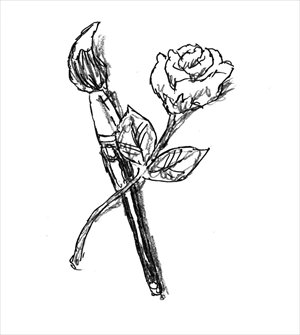Contemporary art’s brush with oblivion

Brush-painting artist Zhang Daqian recently topped the 2013 Hurun Best-Selling Chinese Artists list, with sales of his auctioned works hitting 2.13 billion yuan ($347.3 million) in 2012. Rounding out the top three were watercolor painter Qi Baishi, whose auctioned works fetched 2.03 billion yuan, and ink painter Xu Beihong, whose works' combined hammer price was 1.33 billion yuan.
Aside from being revered as masters at the easel, all three artists share another key characteristic: death. It's a cruel fate of the art world that many creators - including Zhang (1899-1983), Xu (1896-1953) and Qi (1864-1957) - seldom live to experience the peak of their popularity or riches.
Contemporary oil painter Zhou Chunya was the only living artist on Hurun's top 10 list published on May 10. Aside from his pulse, Zhou also stood out as the only non-ink painter in the prestigious group.
If art prices are determined by trends in collection, it's no surprise that guohua (traditional Chinese paintings) works with their timeless appeal still fetch the highest prices. The domestic contemporary art market is still in its infancy, and China's nouveau-riche are far more likely to adorn walls of their mansions with a picturesque ink landscape than a haunting portrait in cynical hues that evokes Cultural Revolution (1966-76) nostalgia.
But why aren't more Chinese contemporary artists cashing in on the 21st century art boom?
Only two years ago, Zeng Fanzhi and Zhang Xiaogang were named among the world's top 10 most expensive working artists. On Hurun's 2013 list, the pair polled 12th and 55th respectively.
It's a cop-out to say contemporary art is falling out of favor; a contemporary art sale on May 16 at Christie's in New York fetched $495 million, the highest total in auction history.
The market for Chinese contemporary art has cooled dramatically since it was ravaged en masse by Western collectors a decade ago. As cutting-edge as artworks have become, there's a lot to lose and not much to gain for domestic curators who host edgy exhibitions.
Last weekend, I took a stroll around the Today Art Museum in my old neighborhood of Shuangjing. As one of the city's hubs for contemporary art, its galleries are often praised by foreign visitors to Beijing who gush about the "vibrant and progressive" local art scene.
But it's easy to make such observations when you're only in town for a week or two; most of the exhibitions and artworks I spied were the same from a year ago.
Chinese contemporary artists are no strangers to criticism from the public and their peers alike, often being accused of lacking creativity and innovation.
Qin Kunying, curator of the Czech-China Contemporary Art Gallery in Beijing, last week told Metropolitan many Chinese contemporary artists "emulate the works of European artists from the 1950s."
While partly true, such a barb is surprising from someone whose own masterpiece Cabbage (2008) appears inspired by American modernist painter Georgia O'Keefe's Red Poppy (1928).
For the past 5,000 years, guohua has dominated China's art world. Contemporary artists' time to shine will come eventually, but not until greater support is offered by galleries at home.